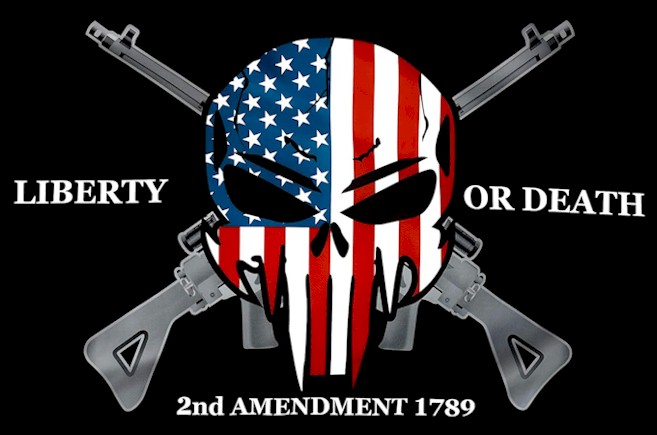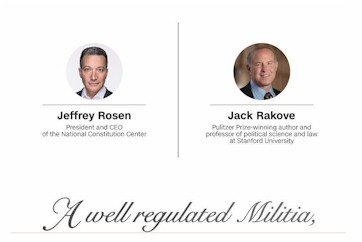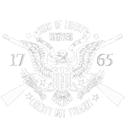
|
Second Amendment rights.
Normally we would avoid using anything from a Major News source but the fact that this was a complete explanation no different than what we would say we are reposting it. The fact it came from CNN in the first place is a shocking all to itself. This was written prior to Buren decision and that has now been edited into this page and what its effects are now on Gun control laws.
|
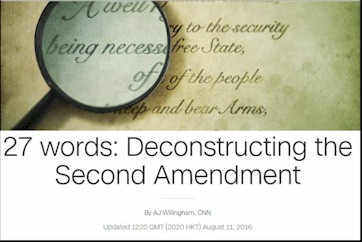 |
|
A well regulated Militia, being necessary to the security of a free State, the right of the people to keep and bear Arms, shall not be infringed. And yet, for years, those 27 brief words have been the source of contentious debate -- seen by some as an inalienable protection against tyranny; by others as a dangerous anachronism. Here's a look at the Second Amendment, its phrases parsed and placed in legal and historical context. Our guides will be Constitutional experts Jeffrey Rosen and Jack Rakove.
What is a militia?At the time of the American Revolutionary War, militias were groups of able-bodied men who protected their towns, colonies, and eventually states. "[When the Constitution was drafted], the militia was a state-based institution," says Rakove. "States were responsible for organizing this." What did it mean to be well regulated?One of the biggest challenges in interpreting a centuries-old document is that the meanings of words change or diverge. "Well-regulated in the 18th century tended to be something like well-organized, well-armed, well-disciplined," says Rakove. "It didn't mean 'regulation' in the sense that we use it now, in that it's not about the regulatory state. There's been nuance there. It means the militia was in an effective shape to fight." In other words, it didn't mean the state was controlling the militia in a certain way, but rather that the militia was prepared to do its duty.
|
 |
What type of security was referred to here?To get to that, consider the climate of the United States at the time. The country had just fought a war, won its independence and was expanding west. There were plenty of reasons to feel unsafe, and so "security" had a very palpable meaning. "You have an expanding country, and the principle defense use of the militia would be to protect local residents from attack and invasion," Rakove says. It also meant physical protection from government overreach. "The idea of a state militia would also be attractive because it serves as a deterrent against national tyranny," says Rakove. "At the time, if government forces tried to take over land or overstep their boundaries, you'd have an institution in place -- the militia -- that would outnumber any army." Of course, with the size and scope of the modern United States military, and the fact that militias as we know it no longer exist, that notion is hard to imagine today. In the debate over the Second Amendment, this phrase, "a well regulated militia," remains one of the most cited and argued parts of the sentence.
|
 |
What did a free state mean?It may seem obvious, but Rosen and Rakove agree the Constitution bore a lot of contemporary moralism and not every word is well-defined. In this case, the meaning of "state" is what it appears to be. "This is referring immediately to 'state' as in one of the states of the original colonies," Rosen says. "James Madison had the 1777 Virginia Declaration of Rights by his side when he wrote the Bill of Rights and he essentially copied and pasted language from it."
View entire document with Document Cloud
But it could also speak to a larger understanding of liberty. "So here," Rosen continues, "George Mason (the author of the Virginia Declaration of Rights) is talking about not only the free state of Virginia." He is also talking about a broader state of freedom.
|
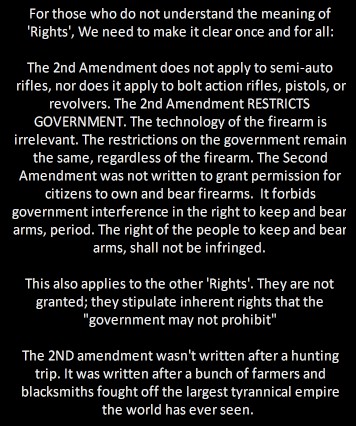 |
What kind of rights?This is another highly-contested area where it helps to know more about how the framers of the Constitution thought about complex ideas like "rights." "When we think about 'rights,' we think of them as regulations and exemptions," Rakove says. "Back at the birth of our nation, they had a different quality. They were more moralistic." Rosen says this viewpoint is reflected in the Declaration of Independence:
View entire document with Document Cloud DocumentCloud
These natural rights included the right to religious expression, free speech, property and more. But they did not, Rosen says, specifically include the tenets of the Second Amendment. "The framers did not talk about the right to bear arms as one of the set of natural rights," he says. "But it is fair to say that the right to alter and abolish government -- to the degree that modern people claim they have that right -- the framers certainly believe it." "In that sense, it is historically accurate to say that the framers did recognize a natural right of self-defense." |
Who are the people?Even the term "people" -- the most basic catch-all -- has limitations. "You say people, you mean individual persons," says Rakove. "But, if you go to Article I, Section 2 of the Constitution, it says the House of Representatives will be chosen by the people -- who are the persons? Who are entitled to exercise that suffrage? You see, you can use the term 'people' to imply a collective mass, but there are some categories of people that can be excluded." After all, when the Constitution was written, slaves were considered property and women were not allowed to vote. In addition, there is a more basic question of semantics: By "the people," is the Second Amendment referring to people as private entities, or as participants in the militia? The legal consensus is that the Second Amendment applies to individual rights, within reasonable regulations. More on that below. |
What are Arms in this context, and what is the scope of bearing Arms?In the "District of Columbia v. Heller," the Supreme Court decided the rights outlined by the Second Amendment did apply specifically to possession of firearms for purposes of self- defense. The decision struck down the Firearms Control Regulations Act of 1975, which heavily regulated owning and keeping firearms in the District of Columbia.
EXCERPT FROM THE HELLER DECISION
View entire document with Document Cloud
The term "arms" is also an ever-changing one, and there are ongoing debates about assault weapons and emerging firearm technologies. "One thing people disagree about is whether assault weapons bans are constitutional," says Rosen. "They also disagree about how we should interpret the constitution in terms of history or in light of new technologies."
|
|
NYSRPA v. Bruen
Bruen altered the well-established test for
evaluating gun safety laws, putting similar laws at risk in multiple states. |
What does it all mean?For modern applications and purposes, we must turn to how the Second Amendment is presented in a court of law. For the most part, these applications have remained consistent since the Heller decision in 2008 and a similar case, McDonald v. City of Chicago, which was decided in 2010. "It's really striking that since these Supreme Court decisions... lower courts have upheld almost all of the gun regulations they have asked to review," he says. Rakove thinks the framers of the Constitution would be surprised at the conversations we are having today. "While there is a common law right to self-defense, most historians think that it would be remarkable news to the framers of the Second Amendment that they were actually constitutionalizing a personal right to self-defense as opposed to trying to say something significant about the militia," he says. Words like "militia" and "rights" are loaded with historical context and nuance that can act as a Rorschach test, leading even the best-intentioned interpreters to different conclusions. If there were any clear answers, these 27 words wouldn't be so incendiary. United Sons Commentary of what it all means.. In Light of the Bruen case we now look at the second amendment it is purest form. It is viewed in the light and time of what the founders intended it to be. It was to restrict government involvement in a persons right to keep, acquire, carry or manufacture arms. It only applies to the actual regulation itself, while not considering that the weapons being regulated have evolved from muskets to semi-automatic weapons since the days of the historical backdrop the Court uses in its analysis. Under this reasoning, the guns being regulated continue to evolve, but the regulations on those guns cannot.
|
Copyright 2004-2024 United Sons Of Liberty Foundation All Rights Reserved.
